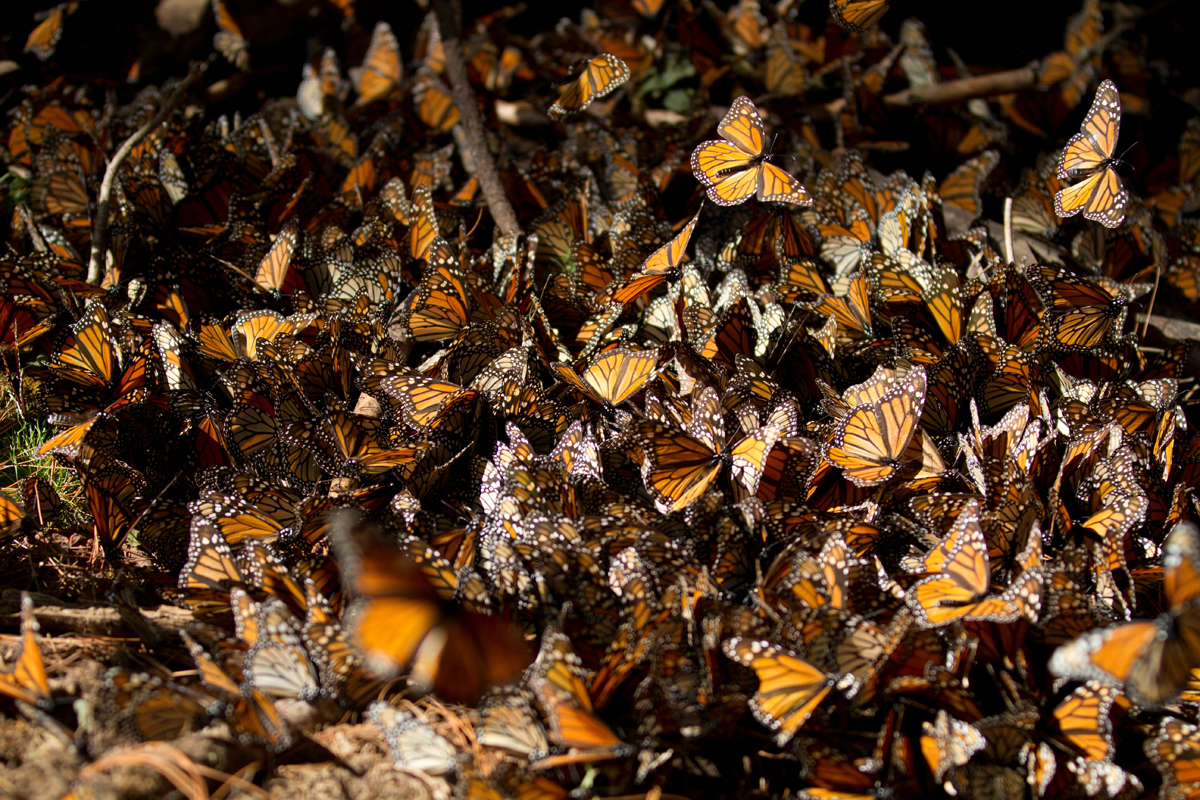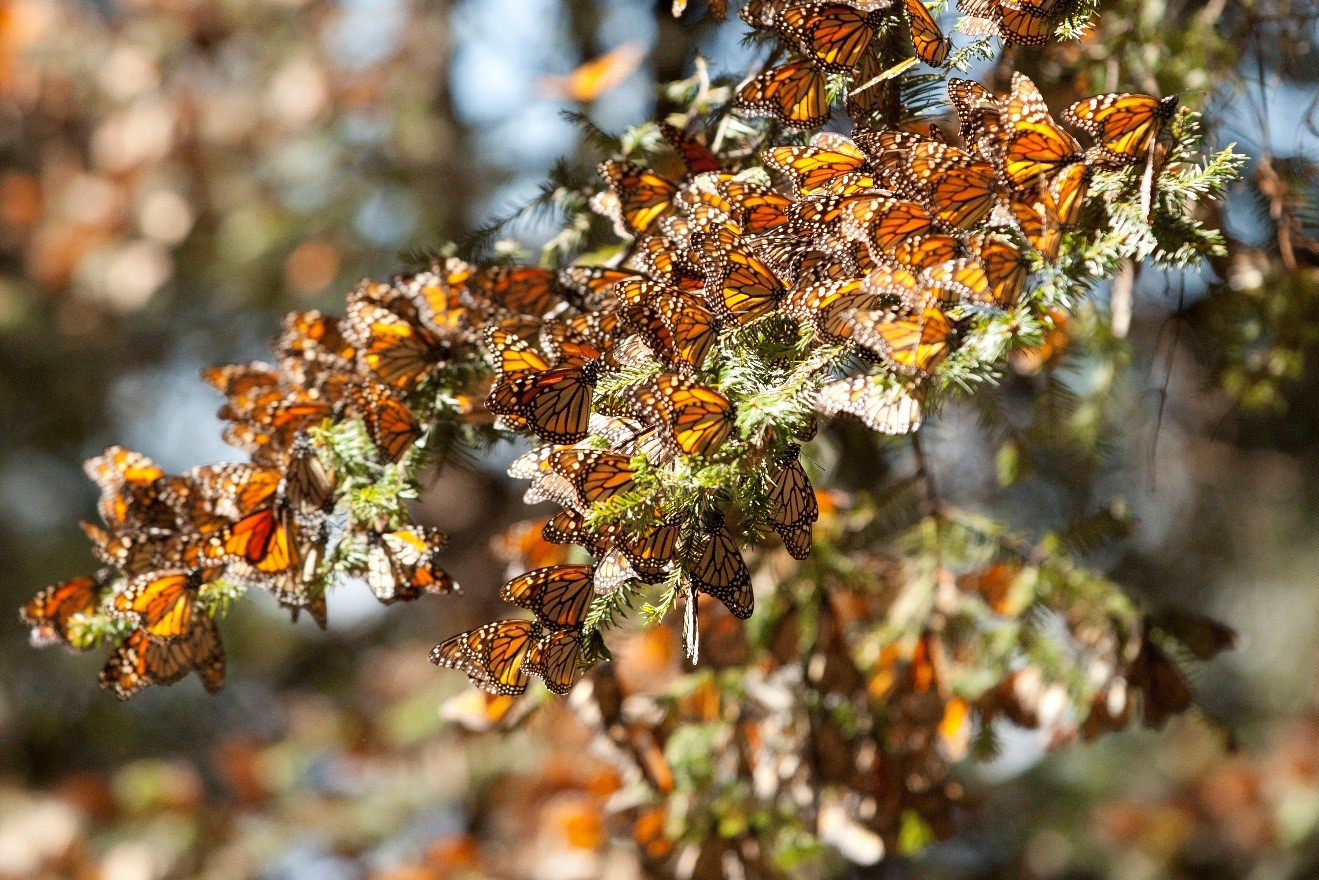
What’s in the Bag? Monarch Butterfly Adventure
An outstanding and often overlooked destination for the nature photographer, Mexico’s monarch migration is sure to be a highlight of your photographic career. Be sure to bring the right gear, as you won’t want to miss a shot!
Please note, photographic styles vary, as do conditions on the ground. While this is meant to be a guide for choosing your camera gear, you should consider your own photographic interests first and foremost.

While the first thing that comes to mind is an ultrawide lens to capture the brilliance of bursting monarchs, or layers sitting quiescently on a tree trunk, telephotos are surprisingly useful. One of the key things is flexibility, because behaviors happen so quickly. Being stuck with all prime lenses, having to change lenses constantly, will likely result in missed shots. Thus, you’ll see that the lenses recommended below are “zoom”, such that they allow you to zoom in and out. Now, prime lenses can be amazing, but be sure to pair them with highly flexible zoom lenses (or better yet, a second camera body), so that you are getting every shot before you.
Ultra wide angle
Not 100% necessary, as often a standard wide angle (18mm on a crop frame; 24mm on a full frame) is enough. However, ultrawides do give you the unique perspective to shoot the ground, trees, and sky in one single shot. You never know what the monarchs are going to be doing on a particular day, but this shot could be the photo of the trip.
Wide angle zoom
Likely the most important lens to have with you. Something that allows you to photograph a big sky with trees one moment, and zoom in on a cluster of monarchs hanging from a nearby bough the next. Something like an 18-55, 24-70, or 24-105 is ideal.
Zoom telephoto
Another very useful lens on this type of trip. Something in the range of a 70-200, 70-300, or even zoom upwards of 400 is great. Because monarchs are often in high trees, or basking in the sunlight across a meadow, being able to zoom in can yield amazing photos. In addition, a zoom lens will allow you to “fill the frame” with butterflies that may not be right in front of you. In addition, there are some really neat birds in these forests at this time of year. I’m not sure I’d recommend lugging along a 500mm lens just for this, but having good zoom certainly can’t hurt.

X-factor lenses
The fun thing about this area is that having an ever vibrant subject in front of you gives you flexibility to get really creative. A macro lens can be really fun for the lone monarch nectar feeding on a small flower. Or, one with very wide aperture like the “nifty fifty” will allow for unique shots.
Flashes
Flashes aren’t allowed in the monarch sanctuaries, and thus aren’t all that helpful on the trip.
Tripods
These can be useful, but are also quite cumbersome when hiking or horseback riding. There is usually plenty of light, so needing a tripod is mainly going to be to brace for larger lenses, or to take video. Taking video is probably the more common use, and it can be great fun. While hand held video is better than no video at all, setting your camera up on a tripod and capturing the movement, no matter how subtle or frenetic it may be on a given day, can capture some amazing footage and document an amazing memory.
Other accessories
Be sure to bring plenty of extra memory, as it’s often surprising how many photos you can take of a single species and a single phenomenon.
By far the most important lens to have with you is something in the wide-angle to medium telephoto range. Multi-purpose lenses work quite well in this environment, as you’re not limited by light. And having the ability to take a shot of a cluster of butterflies on a distant branch one moment and then zoom out for a shot of the towering trees the next is ideal.
While your kit does not need to be as large as one taken to Africa or Costa Rica, for example, you’ll be surprised at how many photographic options there could be during your trip. Covering the full spectrum of focal lengths is best, with the middle range (18 to 200) being the most important.
We hope you find this helpful, and if you have anything to add, please feel free to leave comments below!
Go forward and give it a shot,
Leave a reply